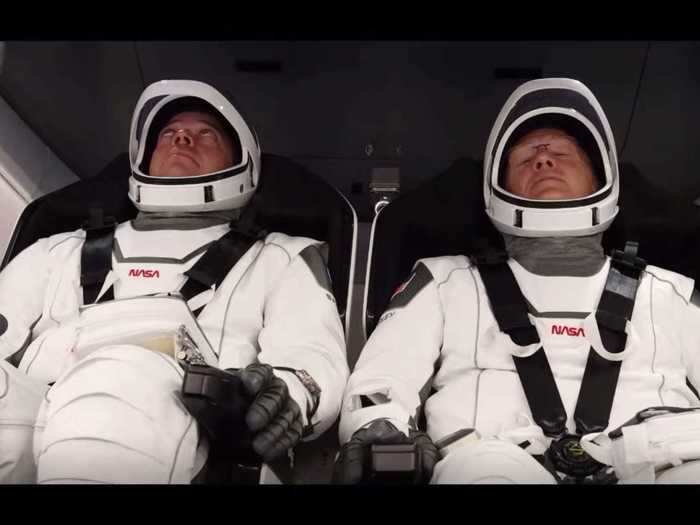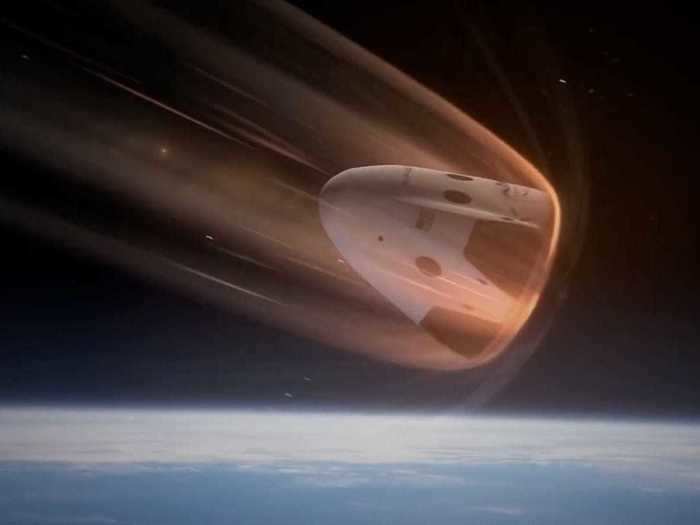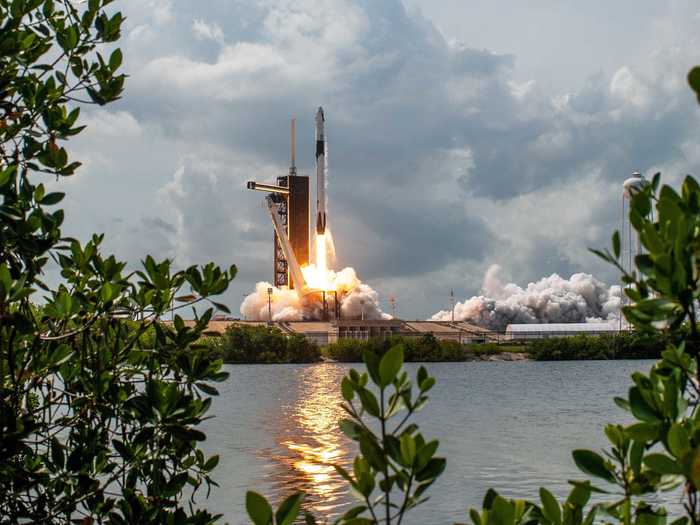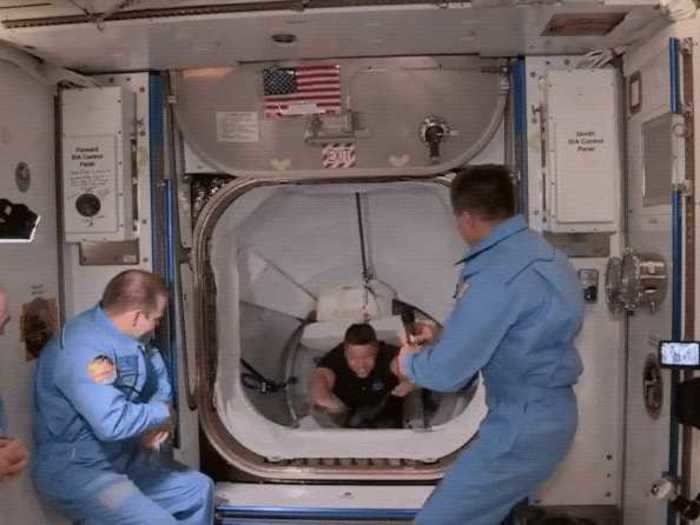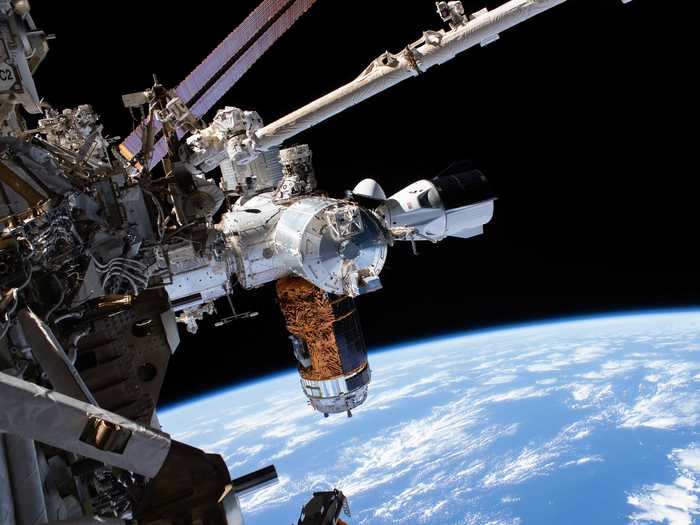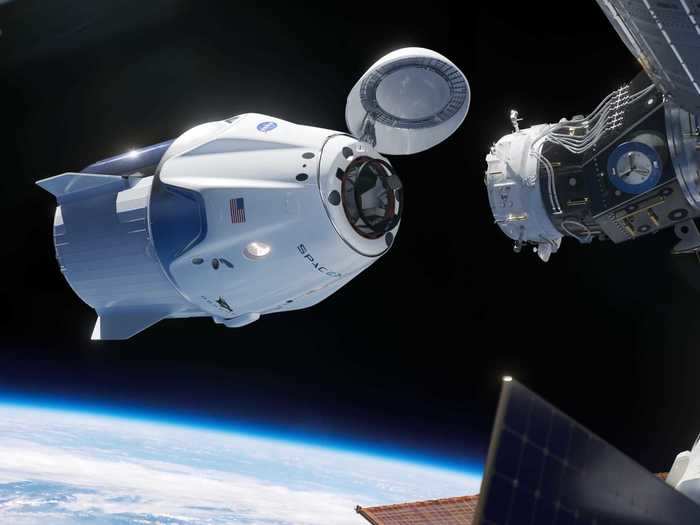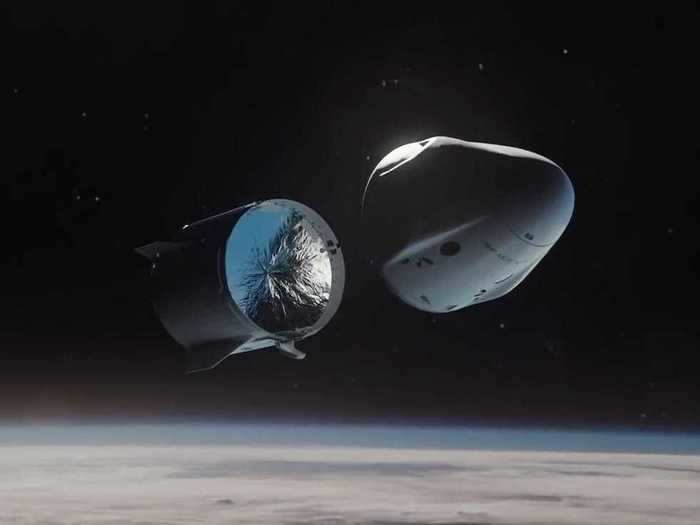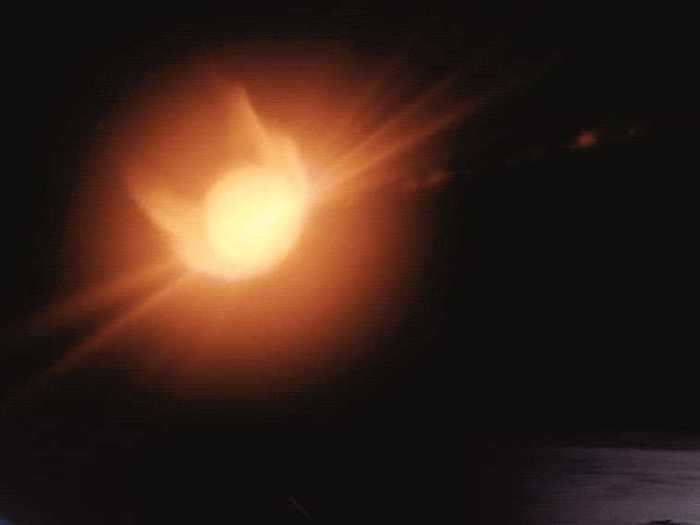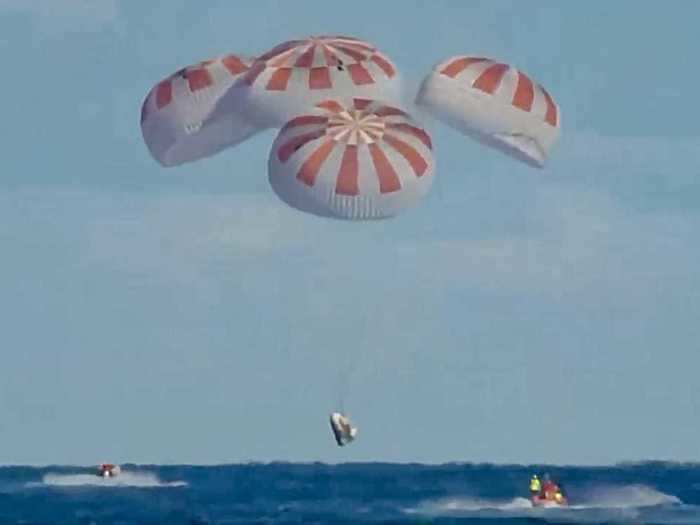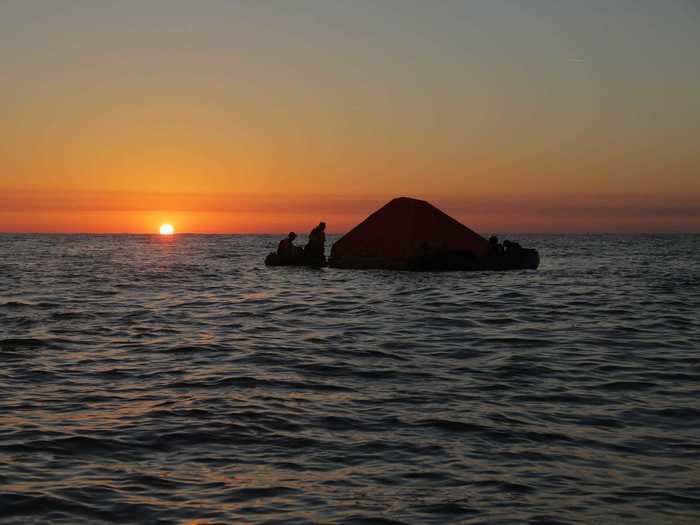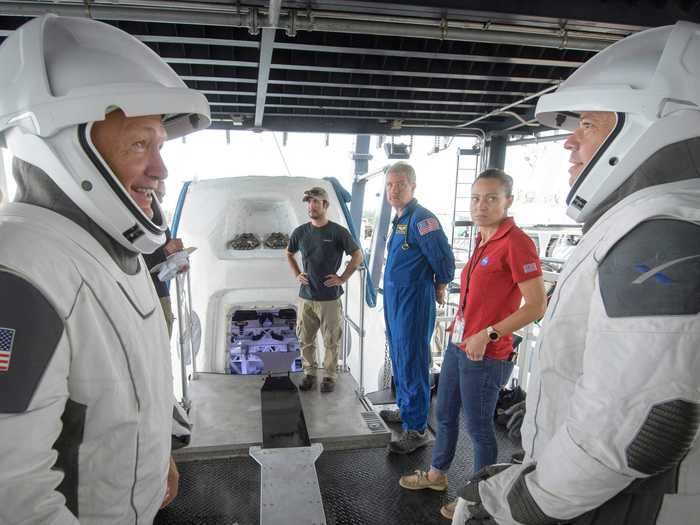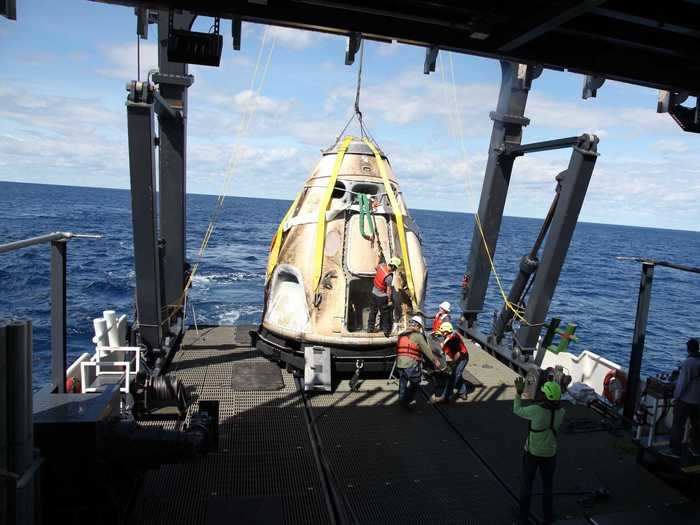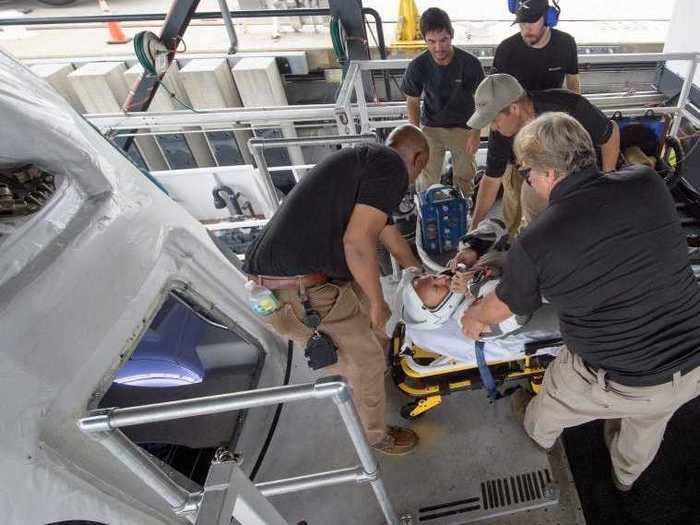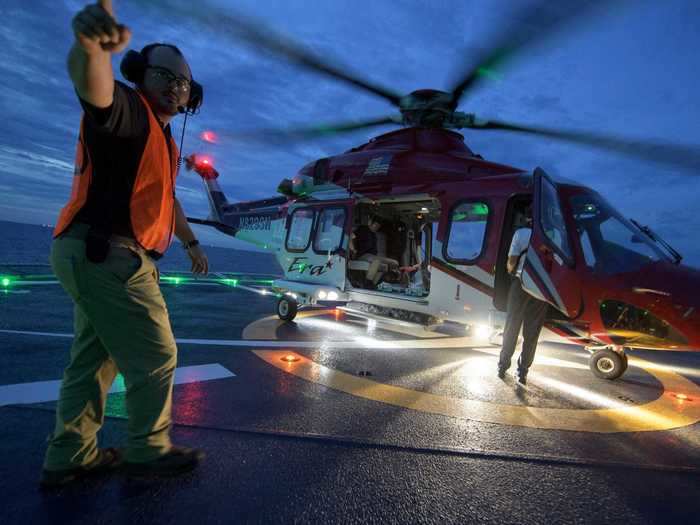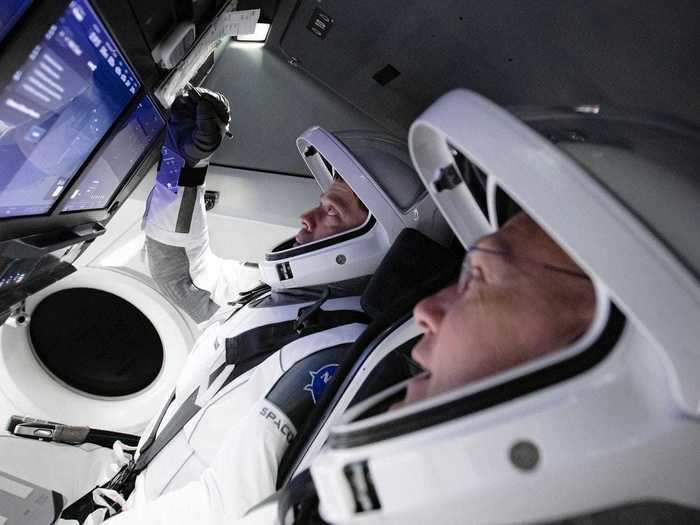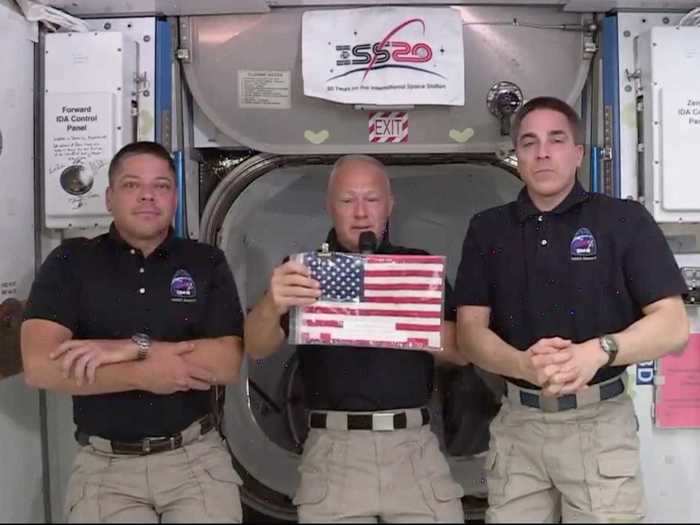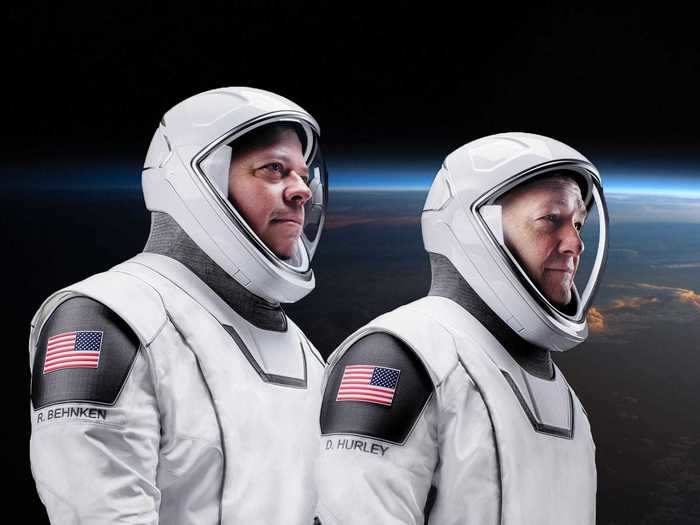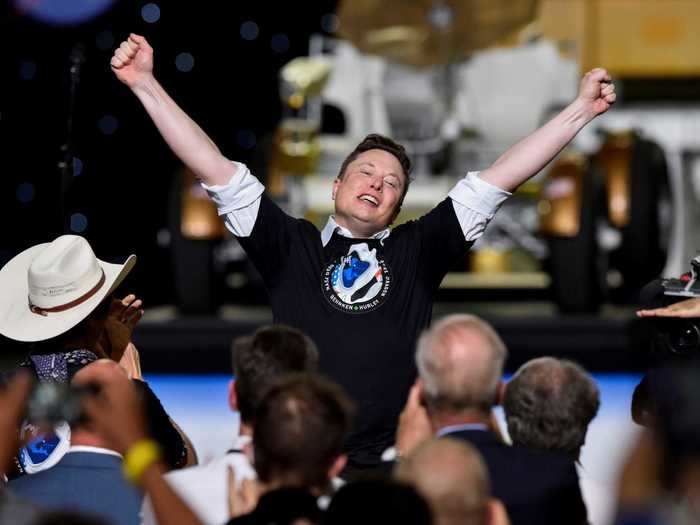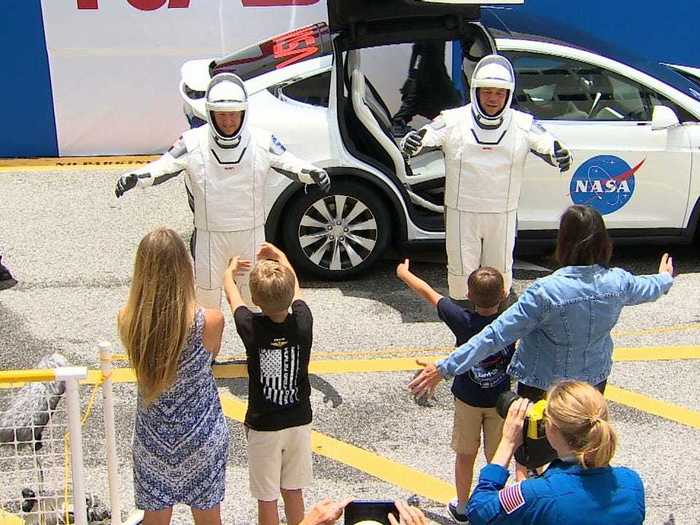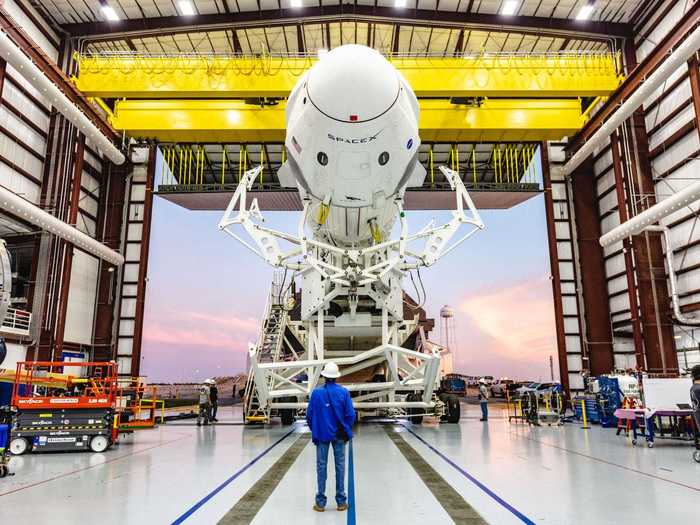NASA astronauts Bob Behnken and Doug Hurley practiced a full simulation of launch and docking of the Crew Dragon spacecraft, in SpaceX's flight simulator, on March 19, 2020.SpaceX - NASA, SpaceX, and two veteran astronauts are about to finish the first-ever crewed commercial spaceflight.
- On Saturday, astronauts Bob Behnken and Doug Hurley are scheduled to climb back aboard the Crew Dragon from the International Space Station, then weather a fiery fall through Earth's atmosphere.
- If the spaceship splashes down successfully, the mission will mark the beginning of a new era in which commercial spacecraft regularly ferry humans to and from space.
- Here's how the return trip will work.
Two NASA astronauts aboard the space station are about to embark on a fiery fall through the atmosphere and into the ocean.
Bob Behnken and Doug Hurley became the first people to fly SpaceX's brand new spaceship, the Crew Dragon, on May 30. It was the first crewed launch from American soil since July 2011, and the first-ever launch of a commercial spacecraft with humans inside. The ship docked to the International Space Station (ISS) the next day, and Behnken and Hurley have been conducting science experiments and spacewalks there ever since.
But now comes the hard part: bringing them back to Earth.
Behnken and Hurley must board the Crew Dragon again and hurtle back through the atmosphere — a voyage that will require the spacecraft to weather temperatures up to 3,500 degrees Fahrenheit.
SpaceX CEO Elon Musk has said that the fall to Earth is what worries him most about the Demo-2 mission.
Here's how each step of the return trip must play out in order to bring the astronauts home safely.
The Demo-2 return trip is set to begin on Saturday, when NASA astronauts Bob Behnken and Doug Hurley suit up and climb back into the Crew Dragon capsule, which they've named Endeavour.
Astronauts Bob Behnken and Doug Hurley wait for launch inside the Crew Dragon spaceship, May 30, 2020.
Screenshot/NASA TV
That's only if Hurricane Isaias, which is headed for Florida, doesn't whip up winds and waters where the capsule might land. NASA and SpaceX will watch the weather closely to make sure it's safe for the capsule to splash down in at least two pre-selected sites.
If the wind is too strong or the waves are too high, the mission has about 50 days to try again before the capsule begins to deteriorate in the harsh environment of space.
If the Crew Dragon safely brings the men back to Earth, the culmination of the mission will officially kick off a new era of commercial spaceflight.
An illustration showing SpaceX's Crew Dragon spaceship returning to Earth and withstanding intense heat from atmospheric reentry.
SpaceX/YouTube
Behnken and Hurley have been in space since May 30, when a Falcon 9 rocket carried them SpaceX's into Earth's orbit in the Crew Dragon spaceship.
SpaceX's Demo-2 mission, launched with a Falcon 9 rocket, lifts off with NASA astronauts Bob Behnken and Doug Hurley inside a Crew Dragon spaceship, May 30, 2020.
Tony Gray and Tim Powers/NASA
The spaceship docked to the space station on May 31, and the astronauts then crawled through its hatch to join their colleagues.
NASA astronauts Bob Behnken and Doug Hurley float into the International Space Station on May 31, 2020, after riding SpaceX's Crew Dragon spaceship to the orbiting laboratory.
NASA
The spaceship is still sitting attached to the ISS. When it's ready to leave, Crew Dragon will retract the hooks that hold it to the station's dock.
SpaceX's Crew Dragon "Endeavour" spaceship photographed by astronauts Bob Behnken and Chris Cassidy while performing a spacewalk on July 1, 2020.
NASA
The undocking is scheduled for 7:34 p.m. ET on Saturday.
Crew Dragon will then gently fire its thrusters to propel itself away from the orbiting laboratory.
An illustration of SpaceX's Crew Dragon vehicle, a spaceship designed to fly NASA astronauts, docking with the International Space Station.
SpaceX
Once it's far enough from the ISS, the capsule will fire more aggressively to put itself on the right path to its splashdown location off the Florida coast.
From there, the spaceship will shed its tube-like trunk — a lower section outfitted with fuel tanks, solar panels, and other hardware, which the astronauts will no longer need.
An illustration of SpaceX's Crew Dragon spaceship shedding its trunk before returning to Earth.
SpaceX via YouTube
The trunk should fall into Earth's atmosphere and burn up.
This will expose the capsule's heat shield. After it fires thrusters for another six minutes or so to push it into Earth's atmosphere, the ship will begin to fall.
An illustration of SpaceX's Crew Dragon spaceship returning to Earth with a blaze of plasma ahead of its heat shield.
SpaceX via YouTube
The heat shield will deflect and absorb the energy of superheated plasma, enduring temperatures up to 3,500 degrees Fahrenheit. The shield should protect the hardware and astronauts as they plow through Earth's atmosphere at 25 times the speed of sound.
Musk has said this stage of the mission is the part he worries about most, due to the ship's asymmetric design.
Elon Musk, March 9.
Photo by Yasin Ozturk/Anadolu Agency via Getty Images
The shape was necessary for the emergency escape system, which can jettison the capsule away if a launching rocket fails in mid-air. Though Musk said the asymmetry is unlikely to cause a problem, he worries it could complicate the plunge back to Earth.
"If you rotate too much, then you could potentially catch the plasma in the super Draco escape thruster pods," Musk told Aviation Week's Irene Klotz in May, a few days before the launch. "We've looked at this six ways to Sunday, so it's not that I think this will fail. It's just that I worry a bit that it is asymmetric on the backshell."
Minutes later, the capsule's parachutes must deploy to slow the ship as it falls through thicker parts of the atmosphere.
A view of SpaceX's Crew Dragon spaceship returning to Earth after a six-day Demo-1 mission in space. It splashed down in the Atlantic Ocean off the coast of Florida.
NASA TV
The first chute should release at 18,000 feet, as Crew Dragon rockets toward the ground at 350 mph. It should slow the capsule's fall to about 119 mph by the time it reaches 6,000 feet, when more parachutes will deploy.
During a press briefing before the mission's launch, Hans Koenigsmann, SpaceX's vice president of mission assurance, was asked what kept him up at night in regard to the mission. He pointed to the parachutes, since their packing can't be tested until they're deployed.
If all goes well, the capsule should splash down in the Atlantic Ocean or the Gulf of Mexico — 22 to 175 nautical miles off the Florida coast — at 2:42 p.m. ET on Sunday.
USAF personnel train to rescue astronauts from SpaceX's Crew Drago spaceship.
NASA Langley Research Center/Ron Beard
At that point, the astronauts will be nearly done with a mission that had a 1-in-276 chance of killing them.
NASA astronauts Doug Hurley, left, and Bob Behnken work with teams from NASA and SpaceX to rehearse crew extraction from SpaceX's Crew Dragon, August 13, 2019.
Bill Ingalls/NASA/AP
They are well aware of those odds: "I think we're really comfortable with it," Behnken told Business Insider ahead of the launch.
After splashdown, Behnken and Hurley will wait inside the capsule for 30 minutes to an hour, depending on the weather and the state of the spacecraft, as recovery teams in boats approach.
SpaceX’s Crew Dragon is loaded onto the company’s recovery ship, Go Searcher, in the Atlantic Ocean, about 200 miles off Florida’s east coast, on March 8, after returning from the International Space Station on the Demo-1 mission.
SpaceX
The recovery teams will retrieve the astronauts and give them a preliminary medical checkout.
NASA astronaut Doug Hurley, with teams from NASA and SpaceX, rehearses crew extraction from SpaceX's Crew Dragon on August 13, 2019 at the Trident Basin in Cape Canaveral, Florida.
NASA/Bill Ingalls
A helicopter will then carry Behnken and Hurley to shore. From there, they will take a plane to Houston.
Teams from NASA and SpaceX practice procedures for medical emergency evacuation onboard the GO Searcher ship, August 15, 2019, off the coast of Cape Canaveral, Florida.
Bill Ingalls/NASA
All in all, the return journey should take 21 hours and 27 minutes.
NASA astronauts Bob Behnken and Doug Hurley practiced a full simulation of launch and docking of the Crew Dragon spacecraft, in SpaceX's flight simulator, on March 19, 2020.
SpaceX
If weather forces a delay, however, it could take anywhere from 6 to 30 hours.
Behnken and Hurley will bring a trophy back to Earth with them: the coveted prize in a 9-year game of capture the flag.
Doug Hurley (center) holds up the flag during a press call with Bob Behnken (left) and astronaut Chris Cassidy (right) aboard the International Space Station, June 1, 2020.
NASA TV
The American flag flew on the first space shuttle and has stayed on the International Space Station since the shuttles stopped launching in 2011, waiting for the first commercial spaceship crew to claim it.
SpaceX and Boeing have both been developing astronaut-ready spaceships through a public-private partnership program that the Obama administration started. Musk's company got to a crewed mission first.
NASA astronauts Doug Hurley and Bob Behnken are the first humans SpaceX rocketed into orbit.
SpaceX; NASA; Business Insider
That means Behnken and Hurley get to bring back the flag.
Musk and NASA officials have been anxiously waiting for the moment the astronauts return to Earth: "I'm not going to celebrate until Bob and Doug are home safely," Bridenstine said after the Crew Dragon reached orbit on May 30.
Elon Musk celebrates after the launch of astronauts on the Demo-2 mission, from NASA's Kennedy Space Center in Cape Canaveral, Florida, May 30, 2020.
Steve Nesius/Reuters
"I felt it most strongly when I saw their families just before coming here," Musk told reporters ahead of the mission's launch.
Hurley and Behnken say goodbye to their families and give distant "hugs," May 27, 2020.
NASA TV
He paused for a few seconds and appearing to choke up before continuing: "I said, 'We've done everything we can to make sure your dads come back OK.'"
If all goes well, NASA will use Crew Dragon to ferry astronauts to and from the ISS regularly — a capability that will free the US of its dependence on expensive Russian Soyuz rockets.
A SpaceX Falcon 9 rocket, with the company's Crew Dragon attached, rolls out of the hangar at NASA Kennedy Space Center's Launch Complex 39A on January 3, 2019.
SpaceX
After Demo-2, NASA has contracted six round trips on Crew Dragon. The first one is scheduled to launch in late September.

